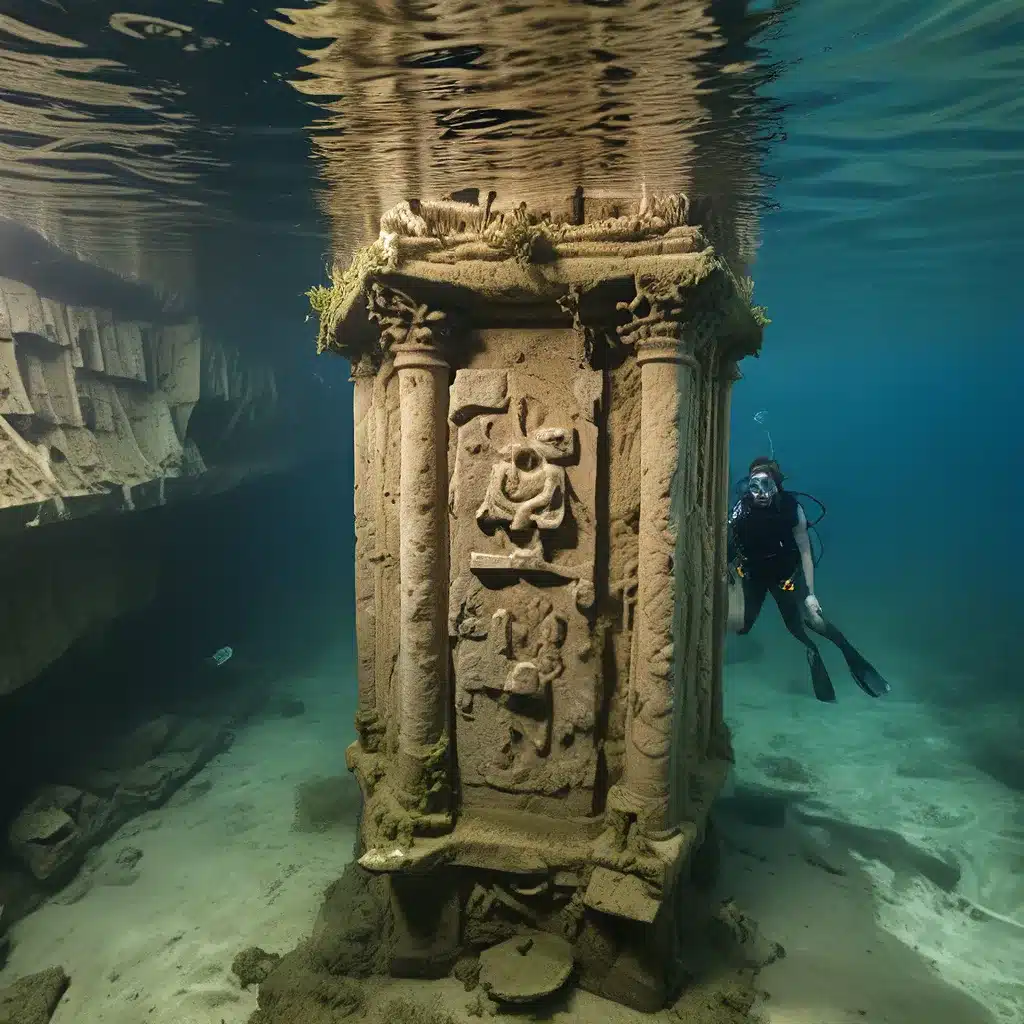
Beneath the shimmering waters of the world’s oceans and lakes, a remarkable and mysterious past lies hidden, waiting to be uncovered. From the ancient ruins of lost civilizations to the well-preserved remnants of shipwrecks, the depths of these submerged archaeological sites hold the keys to unlocking the secrets of our shared human history.
Uncovering the Underwater Treasures of the Mediterranean
The Mediterranean Sea has long been a hub of human activity, from the rise and fall of mighty empires to the bustling maritime trade that connected distant cultures. Scattered along the coasts and submerged beneath the waves lie a treasure trove of archaeological wonders, each with its own captivating story to tell.
One of the most renowned underwater archaeological sites in the Mediterranean is the Cleopatra’s Palace in Alexandria, Egypt. Nestled beneath the shimmering waters, this sunken palace offers a glimpse into the grandeur of ancient Egypt, with intricately carved statues of gods and goddesses lining the seafloor like ghostly sentries. The site also reveals the tactical defenses that once protected the palace, with the ruins of warships scattered throughout the underwater landscape.
Another remarkable Mediterranean site is the Heracleion, a once-bustling city at the mouth of the Nile that now lies enveloped by the sea. This underwater treasure trove offers a unique window into the Ptolemaic Period of ancient Egypt, with exquisitely preserved artifacts and ruins that whisper of the city’s past as a center of trade, religion, and political power.
Preserving the Past: The Challenges of Underwater Archaeology
Exploring and preserving these submerged archaeological sites is no easy feat. The marine environment poses its own unique challenges, from the corrosive effects of saltwater and the high pressure encountered at depth to the limited visibility and the risk of damage from marine construction and development.
To combat these threats, specialized teams of marine archaeologists and well-trained diving inspectors are crucial for the identification, documentation, and conservation of these endangered sites. The EU-funded Iliad project, for example, has developed a comprehensive GIS-based database to map and catalog the coastal and underwater cultural heritage sites along the Israeli Mediterranean coast, providing a vital tool for managing and protecting these fragile resources.
Uncovering Ancient Civilizations in Freshwater Environments
While the Mediterranean Sea has long been the focus of underwater archaeological exploration, other bodies of water around the world have also yielded remarkable discoveries. One such site is the Qiandao Lake in China, which harbors the submerged ruins of the Lion City, also known as Shi Cheng.
Remarkably preserved despite its aquatic tomb, the Lion City offers a rare glimpse into the architecture and city planning of the ancient Han dynasty. The intricate network of streets, buildings, and well-crafted masonry showcases the advanced engineering and design of this long-lost civilization, providing a tangible link to China’s rich past.
Another intriguing freshwater archaeological site is the Yonaguni Monument, a submerged structure off the coast of Japan that has sparked intense debate among scholars. Some argue that the monument’s precise angles and rigid pillars are the result of natural geological phenomena, while others claim it to be the remnants of an ancient Japanese civilization. The mystery surrounding this underwater site continues to captivate and intrigue researchers and explorers alike.
The Allure of Underwater Time Travel
These submerged archaeological sites offer more than just historical artifacts and ruins – they provide a direct connection to the past, allowing us to experience and immerse ourselves in the lives and cultures of our ancestors. From the well-preserved streets and buildings of the Lion City to the ghostly architectural landscape of the ancient Greek city of Pavlopetri, each dive into these underwater treasures is a journey through time, transporting us to worlds long since lost to the tides of history.
Exploring these sites is not just an adventure – it is a vital scientific endeavor, unlocking the secrets of our shared past and shedding light on the development of human civilizations. By uncovering the remnants of ancient trade routes, religious practices, and architectural marvels, marine archaeologists and divers are piecing together a more comprehensive understanding of our global heritage.
The Future of Underwater Archaeology
As technology continues to advance, the potential for further discoveries and advancements in underwater archaeology only grows. From the development of high-resolution mapping and imaging techniques to the use of autonomous underwater vehicles (AUVs) for surveying and exploration, the tools available to researchers and explorers are constantly evolving.
At The Lost Kingdoms, we are dedicated to supporting and promoting the exploration and preservation of these remarkable submerged archaeological sites. Through our collaborative efforts with marine archaeologists, divers, and conservation organizations, we aim to uncover and share the stories of our shared past, ensuring that these captivating remnants of ancient civilizations are protected and celebrated for generations to come.
As we continue to dive into the depths of history, the allure of these underwater archaeological wonders only grows stronger. Whether it’s the haunting beauty of Cleopatra’s Palace, the enigmatic grandeur of the Yonaguni Monument, or the well-preserved ruins of the Lion City, these sites offer a uniquely immersive and captivating glimpse into the past, inviting us to explore, discover, and celebrate the enduring legacy of our ancestors.


